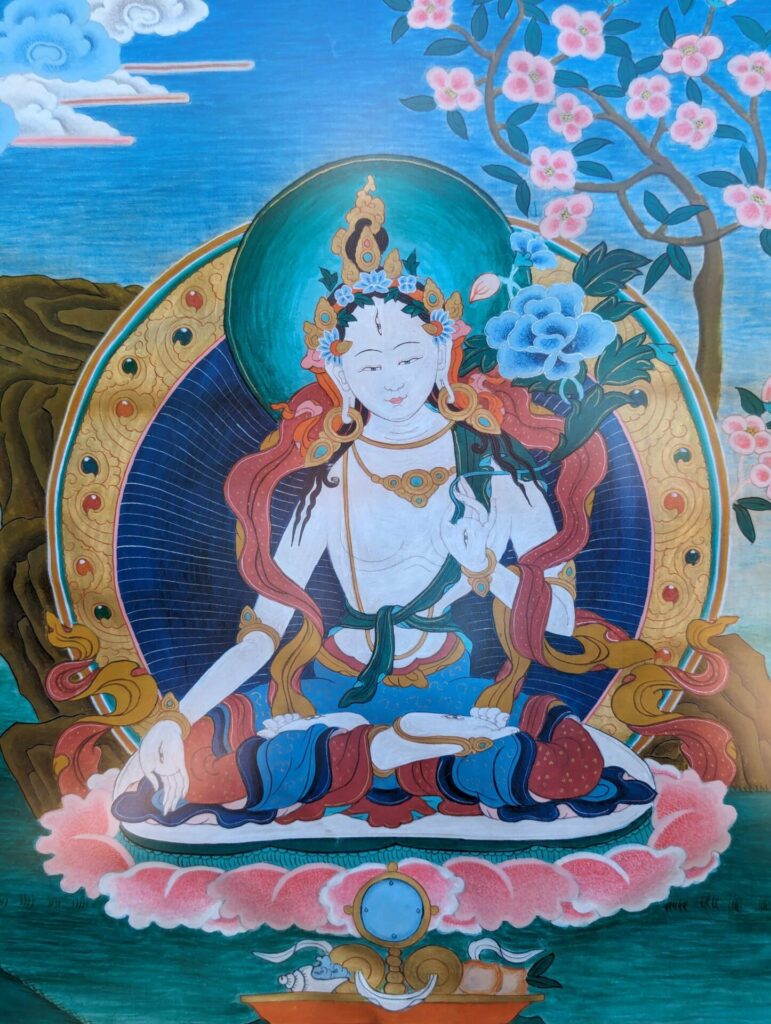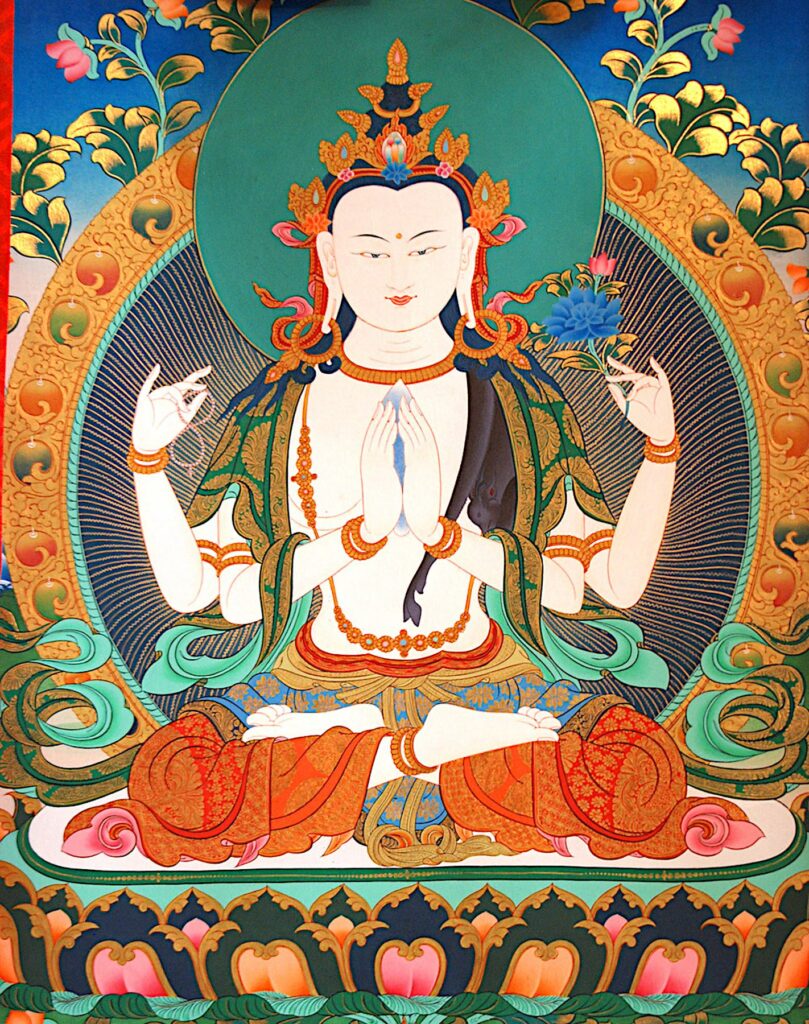Visualisation is a key meditation technique in Tibetan Buddhism. It involves forming a mental image in the mind’s eye, rather than seeing something with our physical eyes. Visualisation is commonly used in deity meditation, where we imagine the Buddha or other Buddhist deities such as Tara, Chenrezig, or Manjushri.
The purpose of visualisation
When visualising the Buddha or other deities, it is helpful to remember the purpose of this practice. Deity visualisation reminds us of our own potential for enlightenment. The deity embodies qualities like wisdom, compassion, love, concentration, ethics, and generosity. By visualising these qualities in the deity, we are activating and strengthening them within ourselves.
Visualising the Deity

During visualisation meditation, reflecting on the deity’s features and their symbolic meaning can improve focus. For example, Shakyamuni Buddha’s right hand represents great method, while his left hand symbolises great wisdom. The bowl of nectar in his left hand signifies the power to overcome delusions and disease. Understanding these symbols helps to deepen our concentration on the visualisation.
To build a clear mental image, we can first analyse and recall the details of the deity’s features. Once the image is established, we shift to single-pointed meditation, holding the image steadily in our mind without further analysis.
While the ultimate goal is to visualise the entire deity clearly, this can take time. To begin, we may focus on visualising just one part of the deity, such as the face or hands, or maintain a general impression of the whole figure, even if the details are not yet clear.
When visualising a Buddha, it is important to see them as a three-dimensional being made of light—luminous and without the solidity of material form. The size of the visualisation can be life-sized, or it can be larger or smaller, depending on what you find comfortable.
Developing patience and stability
Patience is essential when developing visualisation and concentration skills. Progress may feel slow but maintaining a calm and steady mindset will help. Approaching the practice with joy in the effort itself encourages positive mental inclinations and strengthens our meditation over time.
Strengthening your visualisation

One effective method to improve visualisation is to feel that the deity is truly present before you. While paintings or statues can provide helpful reference points, the visualisation should feel as though the deity is alive and engaging with you. To reinforce this sense of presence:
- Visualise the deity looking directly at you, smiling with affection, love, and compassion.
- Reflect that Buddhas are not limited by physical constraints and can connect with us directly.
- Feel that you are in their presence and close to them.
This approach helps make the meditation more vivid, your concentration is actively engaged and in this way it becomes stabilised.
Building familiarity and progressing

Like any skill, visualisation improves with practice. Although your mental image may be unclear or unsteady at first, with repetition the visualisation will become easier and more natural. Over time, the image will arise more spontaneously, and the qualities of the deity will become stronger in your own mind. You will more naturally engage in the actions of a Buddha. For example:
- Visualising Manjushri cultivates wisdom.
- Visualising Chenrezig develops compassion.
- Visualising Maitreya Buddha enhances your capacity for love.
Practical techniques for improvement
There are several methods that can enhance visualisation meditation:
- Visualising the deity as small and focussed can sharpen clarity.
- Starting with an overall image before adding details may help some meditators maintain focus.
- Alternatively, building the image step by step can be more effective for others.
Experiment with different methods to find what works best for you. Remember to alternate between analysing the deity’s features and holding the image steadily without analysis.
For further guidance, Geshe Loden’s Path to Enlightenment in Tibetan Buddhism offers detailed explanations on developing concentration, overcoming barriers, and strengthening mental focus.
With patience and practice, your visualisation will become clearer, steadier, and more powerful, supporting your spiritual growth and meditation practice.
